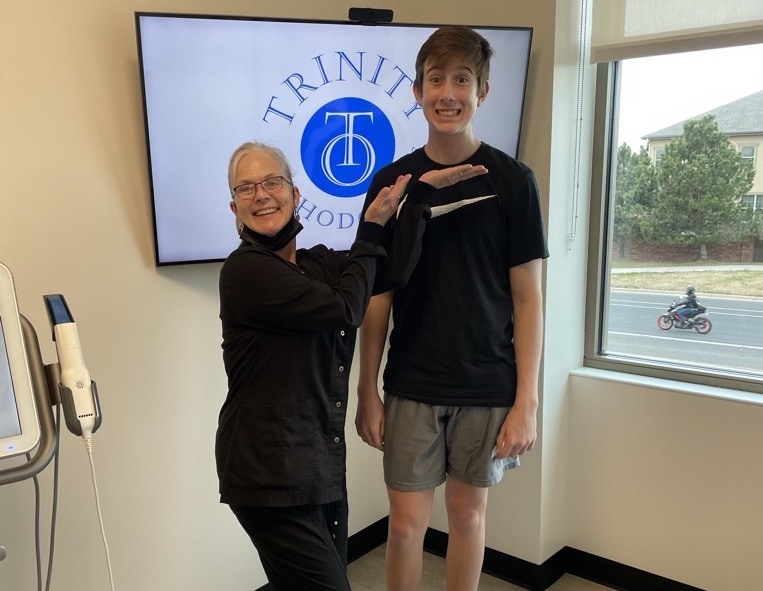As a parent, it may surprise you to learn that your child should visit an orthodontist no later than age 7, according to the American Association of Orthodontists. The earlier a child visits the orthodontist, the more likely that any issues can be addressed while your child’s jaw is still growing.
“By that age, a child will have a mix of baby and permanent teeth, and the orthodontist will be able to recognize orthodontic problems (‘malocclusions’) even in their earliest stages,” the AAO says.
If your child does not need treatment, the orthodontist will send you on your way. However, if treatment is necessary, you’ll be glad you started addressing any problems early.
“It is important to note that early treatment does not apply to all orthodontic problems; however, it may help in certain cases,” according to Colgate. “Two conditions that require early intervention are crossbites and protruding front teeth. A crossbite can cause the jaws to grow unevenly. Front teeth that stick out may be fractured or injured in an accident, such as a fall.”
This early treatment between ages 5 and 11 — called interceptive orthodontics — allows an orthodontist to take advantage of the fact that your child’s jaw is still growing by ensuring that permanent teeth position themselves correctly as they come in.
A modern solution
Despite its reputation as a tool for adults, Invisalign has an option that can work in the interceptive phase.
“At this stage, orthodontists can see issues that may need early treatment to address a developing problem,” according to Invisalign. “Invisalign clear aligner treatment is designed for predictable results and a positive experience while addressing the unique needs of growing children.”
That means that your child won’t have to deal with cumbersome orthodontic tools, like the Herbst appliance, spacers, or palate expanders — tools that are uncomfortable and pose a risk to your child’s oral hygiene.
Starting early also means your child can escape some of the awkward phases of orthodontics at an older age. In fact, the new Invisalign treatment helps address those issues at any age, as it is clear and won’t become the main feature of a child’s smile.
Until recently, Invisalign clear aligner systems were not used for interceptive phase treatment. But, with advancements in the way attachments are used, including clear buttons or small hooks and elastics used with the aligners, an orthodontist with advanced Invisalign expertise can successfully treat young children quickly and safely.
Local treatment
Fortunately, the No. 1 Invisalign provider in the Rocky Mountain region practices locally. Dr Bryan Nelson of Trinity Orthodontics is also a pioneer in digital case planning, and his practice is constantly facilitating more precise tooth movement and shortening treatment times using Invisalign and attachments.
Not only are few orthodontists skilled enough to successfully treat difficult cases with Invisalign, Nelson’s protocol for interceptive treatment is typically done in under 6 months and only 3 appointments.
“His expertise using state-of-the-art technology sets him apart from the average orthodontist,” Trinity Orthodontics says. “Patients benefit by having the most comfortable, efficient, and effective treatment available.”
At the end of interceptive phase treatment, your child will either return for final phase 2 treatment when all the permanent teeth are in or may not need further treatment at all. For more information and to request a complimentary consultation, contact our team today.




